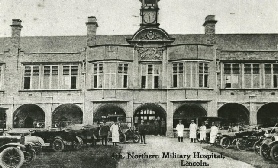Leyton & Leytonstone
Historical Society


First World War stories from St Mary’s Leyton churchyard
Albert Edward Austin (1895-1918) continued

The name ‘Spanish’ flu resulted from the suppression of the numbers dying in countries fighting in the war to maintain morale. Spain was a neutral country and so accurate figures were published for flu fatalities leading to the perception that this country had been particularly hard hit compared to others and the condition was labelled as ‘Spanish’.
The organism responsible for the unusually deadly post First World War flu pandemic was the avian virus Influenza type A H1N1. Flu is an infectious disease of birds and mammals transmitted easily by coughs and sneezes generating aerosols or by direct contact with bird droppings or secretions. This particular pandemic affected healthy young individuals most frequently which is unusual as generally children and older people are more susceptible. Modern research, using H1N1 virus obtained from victims has shown that the virus kills by causing a cytokine ‘storm’ (overreaction of the immune system). The strong immune reactions of young adults ravaged their bodies, killing quickly, usually after the lungs filled with fluid. The weaker immune systems of children and older adults resulted in fewer fatalities in these age groups. Another unusual feature of the virus was that it simultaneously infected both humans and pigs.

4th Northern General Hospital, Lincoln
Close quartering of combatants and large scale troop movements during the war spread the pandemic and probably also increased transmissibility, viral mutation, and the lethality of the virus. The soldiers’ immune systems may also have been weakened by malnourishment, combat stress and chemical attacks increasing viral susceptibility.
The virologist Professor John Oxford of Queen Mary, University of London has proposed that the pandemic emerged at an army base. and spread rapidly outwards from there.